[fusion_builder_container hundred_percent=”no” hundred_percent_height=”no” hundred_percent_height_scroll=”no” hundred_percent_height_center_content=”yes” equal_height_columns=”no” hide_on_mobile=”small-visibility,medium-visibility,large-visibility” status=”published” class=”@media only screen and ( min-width: 800px ) {padding-top: 0px; padding-right: 5px; padding-bottom: 0px; padding-left: 5px; }” background_position=”center center” background_repeat=”no-repeat” fade=”no” background_parallax=”none” enable_mobile=”no” parallax_speed=”0.3″ video_aspect_ratio=”16:9″ video_loop=”yes” video_mute=”yes” border_style=”solid” padding_right=”%” padding_left=”7%” admin_label=”Large Screen text” flex_column_spacing=”0px” type=”legacy”][fusion_builder_row][fusion_builder_column type=”1_1″ layout=”1_1″ spacing=”” center_content=”no” link=”” target=”_self” min_height=”” hide_on_mobile=”small-visibility,medium-visibility,large-visibility” class=”” id=”” background_color=”” background_image=”” background_image_id=”” background_position=”left top” background_repeat=”no-repeat” hover_type=”none” border_color=”” border_style=”solid” border_position=”all” border_radius=”” box_shadow=”no” dimension_box_shadow=”” box_shadow_blur=”0″ box_shadow_spread=”0″ box_shadow_color=”” box_shadow_style=”” padding_top=”” padding_right=”” padding_bottom=”” padding_left=”0px” margin_top=”” margin_bottom=”” animation_type=”” animation_direction=”left” animation_speed=”0.3″ animation_offset=”” last=”true” first=”true” border_sizes_top=”0px” border_sizes_bottom=”0px” border_sizes_left=”0px” border_sizes_right=”0px” type=”1_1″][fusion_text columns=”” column_min_width=”” column_spacing=”” rule_style=”default” rule_size=”” rule_color=”” hide_on_mobile=”small-visibility,medium-visibility,large-visibility” class=”” id=”” animation_type=”” animation_direction=”left” animation_speed=”0.3″ animation_offset=””]
[/fusion_text][fusion_text columns=”” column_min_width=”” column_spacing=”” rule_style=”default” rule_size=”” rule_color=”” content_alignment_medium=”” content_alignment_small=”” content_alignment=”” hide_on_mobile=”small-visibility,medium-visibility,large-visibility” sticky_display=”normal,sticky” class=”” id=”” font_size=”” fusion_font_family_text_font=”” fusion_font_variant_text_font=”” line_height=”” letter_spacing=”” text_color=”” animation_type=”” animation_direction=”left” animation_speed=”0.3″ animation_offset=””]
The difference between doing versus being: Escape Productivity Obsession
The distinction between doing versus being is crucial for our personal wellbeing. Knowing the difference can allow us to escape our society’s productivity obsession. Yet it’s tough to understand the two states and their full ramifications, particularly when it relates to us. We’re blinded by our own emotions and false sense of self-worth. Furthermore, our society’s obsession with productivity and motivation doesn’t help.
Learning the distinction between doing versus being might be the most important lesson you learn all week. (Or all month, but I don’t want to be presumptuous.)
And, since it’s hard to learn doing versus being when it brings up our own vulnerabilities and inner conflicts, I decided to teach it differently. A safe way that doesn’t involve you or your life choices or anything you do with your time.
Bring in the Minions.
.
Doing versus Being Minions
Doing Minions
I want you to imagine two armies of minions. (Feel free to picture yellow minions from Despicable Me, or assign any color and shape of your choosing.) Both armies of minions are on a tropical island, but they’re on separate beaches.
The first arm of minions – Doing Minions – move around in full action mode. You’ve got minions assessing the waves, minions collecting coconuts, and minions building sandcastles. Some are smiling, some are more serious (and, occasionally, a minion’s sandcastle is destroyed, and you hear a bellow of frustration). But they’re all working toward clear goals with a sense of progress.
There’s also the Productivity ObsessionTeam moving around these groups. The Productivity Obsession Team rules the beach, and they make notes on their clipboards and compare progress with checklists.
The Productivity Obsession Team also runs back and forth between Past Headquarters, a group of older minions sitting in beach chairs with clipboards of their own, and Future Headquarters, a group of minions atop a tree, adorned with binoculars and telescopes.
When Doing Minions complete one task, Productivity Obsession Team gives them a high-five assigns them another. You see, Doing Minions love high-fives. They get a shot of dopamine in their brains that feels great.
But just as soon as the reward comes, it goes away in the face of their next task. And then the Doing Minions keep at it, a constant swirl of movement, action, goals, assessment, and high-fives.
.
Being Minions
The other side of the island, where the Being Minions reside, looks a bit different.
On this beach, a few minions are splashing in the waves. Some minions are lying in the sun, casually chatting about this and that. A few minions work on sandcastles, totally content when a wave washes up and forces them to restart.
There’s no Productivity Obsession Team on this beach. Instead, there’s a Mindfulness Team. This team, however, doesn’t have clipboards, nor do they run. Instead, the Mindfulness Team members wander amongst the minions. Sometimes they stop and ask, “How are you feeling today?” or “Are we content with who we are right now?” Other times, they simply sit down next to the Being Minions and hang out.
At the far end of the Beach, there is a Past Headquarters. But it’s more like a circle of beach chairs, and the Being Minions only visit it when they’re trying to remember something in comparison to the present.
As for the pair of binoculars, they’ve been turned into an excellent ornament on the latest sandcastle creation. The Being Minions realized that they couldn’t see anything clearly through them anyway.
A Doing Minion might find it shocking that there are no high-fives on Being Minion beach. Over time, however, they’d realize the feelings and thoughts act on this side of the island serve as a big hug instead.
.
What is the difference between Doing versus Being for People?
Okay, it’s time to move on from the Minions. (If you’re thinking it was time to move on five paragraphs ago, you might be right… I was just having so much fun hanging out on the beach with them!) However, I want you to visualize the two beaches as you dive into Doing versus Being for your life.
.
What’s Doing versus Being look like for people?
Definition of a Doing Mindset
A Doing mindset is all about action. It’s when we’re focused on making decisions, taking action, and chasing goals. Everything we do is rooted in how it contributes to the future. As such, a doing mindset always contemplates the past and future in the context of forward progress. Thoughts and actions are relevant insofar as they’re placed in a larger sequence.
When we’re in a Doing mindset, we’re rewarded when we complete a task. Just as the Doing Minions received a high-five, we feel a momentary burst of dopamine. However, just as a high-five is over in an instant, so is our celebration.
A Doing mindset also primes us for triggers and reactions from our external world. In our continuous state of action, events around us simply inspire further action – often without our awareness. For a whole slew of reasons, we’re powerfully influenced by our environment. (This is why designing your environment is so vital for success.)
When we are conscious of these influences, we receive them through the lens of, “How will this affect my sequence of action and pursuit of goals?” While this is not inherently bad, it often clouds our ability to receive and process information in the present.
The Brain in a Doing Mindset
We don’t just “think” when we’re in a Doing mindset; our brains switch into a whole new default mode. When we’re Doing, our brains are continuously assessing how our actions are aligning with our goals.
Remember the Doing Minions beach? Constant activity, comparison, and evaluation, with a Productivity Obsession Team running around nonstop? That’s what your brain is like when it’s in Doing Mode.
The Productivity Obsession Team can be compared to your brain’s “Discrepancy Monitor,” as it’s sometimes referred to. It’s when our brain monitors what gaps lay between the present reality and the future reality we want. We look at our goals, how far we are from them, and what must be done to achieve them.
.
The Dangers of a Doing Mindset
A Doing mindset is not all negative. It’s obvious to see how it can benefit our pursuit and accomplishment of goals. However, when our brains switch into Doing mode, we lose out on other vital functions.
1. We limit our ability to make connections.
When our brains only process new information under the guise of, “How does this fit in with my goals?” we limit our ability to make connections. Sure, maybe this new piece of info doesn’t fill the present gap, but perhaps it’s a key tidbit that you might find useful later on in life. Or, better yet, perhaps it can help shed meaning to something that happened in your past. When our brains are in Doing (versus Being) mode, we limit these connections.
2. We limit our potential for full self-awareness and reflection.
Just as new information isn’t connected with other knowledge, it’s also not connected with ourselves. Every new experience allows us to reflect and further our understanding of ourselves. We limit this self-awareness when our brains reside in a Doing mindset.
3. We heighten our struggle with uncertainty.
Doing versus Being likes certainty and clarity. After all, Doing is about action, and action needs a plan. When we’re full force into Doing mode, we often skip past moments of uncertainty or look to fill “limbo” with something – even if waiting might be the better option. Humans have a natural tendency to struggle with uncertainty as it is, so Doing versus Being doesn’t help.
4. We get stuck in our self-growth when we can’t see a “how.”
Self-growth requires discomfort and uncertainty for maximum results. It also requires time and patience – two qualities that a Doing versus Being mindset doesn’t encourage. When we’re always working toward something, we can become stuck – or even paralyzed – when we don’t know how to get where we want to go. (Or, worse, when we don’t know where we want to go in the first place.) Doing immediately puts fears of failure into our brain, not to mention the anxiety that comes along with it.
5. We attach our self-worth to external goals.
Perhaps the most significant danger of a Doing mindset is when we attach our self-worth to our Doing. We begin to judge ourselves based solely on our ability to achieve our goals. Over time, our identities become falsely grounded in what we do and how much we do. Not only does this hurt our self-awareness, but it makes us feel like we’re “not good enough.”
A Doing mindset is not all bad, and we’ll get into examples later. However, as you learn the difference between Doing versus Being (as well as the role it plays in your life), it’s critical to be self-aware of these potential dangers.
.
Definition of a Being Mindset
A Being mindset, on the other hand, is focused on the present. Thoughts and actions matter only insofar as they relate to our present state of mind. We don’t worry about the future or the past, and we certainly don’t evaluate new information regarding how it will affect our future trajectory.
Being versus Doing emphasizes acceptance over evaluation. When we’re in Being mode, we are open to what is happening around us. We listen to our environment, but we’re not triggered by it.
Just as the Being Minions enjoyed their beach and had time to contemplate life, so do we when we’re in a Being mindset.
Dr. Zindel Segal, an expert psychologist and author in the field of mindfulness, refers to Being as:
“By contrast, the being mode is not devoted to achieving particular goals. In this mode, there is no need to emphasize discrepancy-based processing or constantly to monitor and evaluate (“How am I doing in meeting my goals?”). Instead, the focus of the being mode is “accepting” and “allowing” what is, without any immediate pressure to change it.”
.
The Brain in a Being Mindset
When our brains are switched into a Being mindset, we’re able to seek a state of mindfulness. You’ve probably heard many different things about mindfulness; in its essence, it’s defined as our awareness of our thoughts, feelings, bodily sensations, and environment in the moment.
Our brains aren’t running back and forth between Past and Future Headquarters. Instead, they’re rooted firmly in the present.
This doesn’t mean that new thoughts can’t come up. Nor does it mean that we can’t take action. When we’re embodying Being versus Doing, we’re accepting these elements in the moment rather than evaluating their role in our pursuit of goals.
.
The Benefits of Being versus Doing
You’ve already read the dangers of a Doing mindset. A Being mindset can help you avoid these five dangers, but that’s not all. When we live in a Being mindset, we receive additional benefits.
1. We have more profound, richer experiences.
It’s no surprise that we’ll have more profound experiences when we’re rooted in the present. Living fully in the moment will allow us to connect more with what’s happening around us. Whether it’s tapping into our five senses, appreciating nature, or connecting with others, a Being mindset will promote more profound, richer experiences.
2. We enjoy the self-discovery process.
Figuring out who we want to be is not a quick process, nor is it always pretty. Some people argue, however, that it’s the most essential element for living a meaningful life. A Doing mindset blocks us from appreciating this self-awareness evolution because we’re too fixated on tangible goals. When we’re in a Being mindset, we can relish the process and enjoy the self-discoveries we make along the way.
3. We find self-worth inherently.
Everyone is worthy because of who they are as a person. (Yes, even your creepy uncle who makes everyone uncomfortable on holidays – he’s just got some more work to do.) Our Doing-focused society makes us connect “worth” with “achievement.” This perception is ingrained into many of us, but we can fight against it by tapping into Being mode.
4. We can expand our sense of meaning and purpose.
Finally, when we erase the notion that Doing equates to purpose, our world opens up to limitless options for what can give us purpose. We free ourselves from the confines of societal definitions. Instead, in a Being mindset, we can begin to define meaning for our own life. Then, an action we take can be grounded in our present sense of purpose and direction.
.
Why It’s Hard for us to Live in a Being Mindset
If a Being mindset has so many benefits, why is it so difficult for us to switch? After all, don’t the Being Minions seem more content than the Doing Minions?
For many reasons, Doing versus Being comes first for us – even though it goes against what’s best for our nature. As such, we’ve got to work harder to create lives that emphasize mindfulness over achievement.
Being versus Doing feels more vulnerable.
First, Being versus Doing invites greater uncertainty into our lives. We’re wired with a deep fear of the unknown. (This isn’t our fault; it’s our evolutionary survival instincts kicking in.) We also crave control and predictability. You know what feels out of control and unpredictable? Living in the present, with no eye or work toward the future.
A Being mindset is vulnerable to us. We have to be okay with not knowing everything or having a specific plan.
.
Our Society Productivity Obsession Promotes Doing versus Being
Being versus Doing also requires vulnerability because it goes against cultural norms. Our society is obsessed with productivity. Everything around us tells us to achieve, keep busy, and obtain more, more, more. Naturally, we think the best way to obtain more, more, more is to do, do, do. (Did anyone else sing that line in the tune of a Backstreets Boys song? No, just me?)
According to performance psychologist Dr. Michael Gervais, “Our identity is depicted by what we do and how much we do in society.”
Our brains have been trained and rewarded for Doing versus Being. Since a young age, we’ve been rewarded – both internally and externally – for doing things that lead to achievement. Those dopamine high-fives conditioned us to repeat the cycle.
Lastly, our media and information-rich world makes mindfulness difficult.
Whether you’re a proponent for technology or not, the fact remains: it gives us ample opportunity for distraction. We’re overstimulated with notifications, advertisements, and media. What’s worse, technology engineers know how to tap into our basic human instincts to keep us hooked for longer periods.
This barrage of messages makes it challenging to embody Being.
It’s going to take some time to retrain your brain, but it’s possible.
.
How Doing versus Being Can Come Together (and Still Overcome a Productivity Obsession)
Thus far, I’ve emphasized the benefits of Being and the dangers of Doing. It’s crucial to note that transitioning into Being mode more in your life doesn’t mean that you stop all goals in your life. It means that you’re more present-minded in the pursuit of your goals.
For example, I’m a goal-oriented person. Pursuing goals gives me a great sense of purpose. The problem is that I often take action toward goals without fully knowing what I’m working toward. I do for the sake of doing. (Like that time I formatted 80 pages… only to finish, realize I wanted to change the whole premise, and have to start all over again.)
I need to work on how to live in a Being mode more than a Doing mode as I pursue my goals. It’s in my Being mode that I will discover and define the goals I want to pursue. As I take action to achieve them, I need to be present in my pursuit and grounded in the process.
Being will give me the meaning and purpose that a hollow Doing won’t be able to do.
.
How to Switch from Doing to Being
The more we can learn to live in Being mode, the more meaning we can find in our lives. This transition is not going to happen overnight, nor will it be easy.
There are steps you can take to work toward a Being mindset rather than a Doing mindset.
1. Practice mindfulness.
Mindfulness doesn’t have to be meditation (although it certainly can be). Mindfulness simply means being aware of yourself and your surroundings. Try to be more present in your daily life. What are you feeling? What are you thinking? Breathing exercises can help ground you in the present moment and quiet any anxious feelings you may have.
2. Define your personal philosophy
A personal philosophy is a clear, concise principle or set of principles that guide your life. While it can evolve as you do, it’s rooted in your core values. Essentially, it’s your life mantra – and it can help guide you through large and tiny life decisions. Defining your personal philosophy will help you shift from Doing to Being because it will help emphasize who you are rather than what you do.
3. Develop your self-awareness
Being self-aware is linked to numerous benefits, including better mood, stronger relationships, more success, and overall life satisfaction. Self-awareness is all about identifying your thoughts, feelings, and actions. Unfortunately, our human nature makes it challenging to be self-aware. The good news is that you can develop your self-awareness. The more you understand yourself and your reactions, the more you can embrace Being versus Doing.
4. Revisit your meaning and purpose.
Society gives us a lot of messages about what “should” be meaningful. It’s easy to get sucked into these false cultural narratives and apply them to our own lives. By taking the steps above and diving into deep questions, we can begin to reclaim our definition of a meaningful life. In doing so, we can stop Doing to achieve self-worth and meaning. Instead, we can Be.
5. Design your environment around your life values
Finally, once you determine what gives you meaning and is important to you, you must live by these principles. Unfortunately, it’s still easier said than done because of our outdated brain function and human tendencies. That’s why you must work more strategically by designing your environment around your life values. Set your environment and triggers up in a way that promotes Being versus Doing.
[/fusion_text][fusion_code]PGlmcmFtZSBpZD0iaW50ZXJhY3RBcHA1ZmEzMzgwMTAzZmVkMjAwMTQ3YjFjNWYiIHdpZHRoPSI4MDAiIGhlaWdodD0iODAwIiBzdHlsZT0iYm9yZGVyOm5vbmU7bWF4LXdpZHRoOjEwMCU7bWFyZ2luOjA7IiBhbGxvd1RyYW5zcGFyZW5jeT0idHJ1ZSIgZnJhbWVib3JkZXI9IjAiIHNyYz0iaHR0cHM6Ly9xdWl6LnRyeWludGVyYWN0LmNvbS8jLzVmYTMzODAxMDNmZWQyMDAxNDdiMWM1Zi9xLzE/bWV0aG9kPWlmcmFtZSI+PC9pZnJhbWU+[/fusion_code][fusion_text columns=”” column_min_width=”” column_spacing=”” rule_style=”default” rule_size=”” rule_color=”” content_alignment_medium=”” content_alignment_small=”” content_alignment=”” hide_on_mobile=”small-visibility,medium-visibility,large-visibility” sticky_display=”normal,sticky” class=”” id=”” font_size=”” fusion_font_family_text_font=”” fusion_font_variant_text_font=”” line_height=”” letter_spacing=”” text_color=”” animation_type=”” animation_direction=”left” animation_speed=”0.3″ animation_offset=””]
Conclusion: Why Knowing the Difference Between Doing versus Being will Free Your From Our Productivity Obsession
Doing versus Being are two mindsets that we embody in life. When we switch our brains into one of these two modes, we shape how we view the world and view ourselves.
A Doing mindset is all about action. It’s when we’re focused on making decisions, taking action, and chasing goals. Our brains are primed for spotting discrepancies and placing information in larger sequences.
A Being mindset, on the other hand, is focused on the present. Thoughts and actions matter only insofar as they relate to our present state of mind. We don’t worry about the future or the past, and we certainly don’t evaluate new information regarding how it will affect our future trajectory.
Ultimately, a Being mindset has more benefits, including:
- We have more profound, richer experiences.
- We enjoy the self-discovery process.
- We find self-worth inherently.
- We can expand our sense of meaning and purpose.
To achieve these benefits and embody Being versus Doing, we must fight against our culture’s obsession with productivity and achievement.
Steps you can take include:
- Practice mindfulness
- Define your personal philosophy
- Develop your self-awareness
- Revisit your meaning and purpose
- Design your environment around your life values
[/fusion_text][/fusion_builder_column][/fusion_builder_row][/fusion_builder_container][fusion_global id=”3654″][fusion_builder_container admin_label=”Large Screen follow-up” hundred_percent=”no” hundred_percent_height=”no” hundred_percent_height_scroll=”no” hundred_percent_height_center_content=”yes” equal_height_columns=”no” hide_on_mobile=”small-visibility,medium-visibility,large-visibility” status=”published” border_style=”solid” padding_right=”25″ padding_left=”25″ gradient_start_position=”0″ gradient_end_position=”100″ gradient_type=”linear” radial_direction=”center center” linear_angle=”180″ background_color=”#000000″ background_position=”center center” background_repeat=”no-repeat” fade=”no” background_parallax=”none” enable_mobile=”no” parallax_speed=”0.3″ background_blend_mode=”none” video_aspect_ratio=”16:9″ video_loop=”yes” video_mute=”yes” filter_hue=”0″ filter_saturation=”100″ filter_brightness=”100″ filter_contrast=”100″ filter_invert=”0″ filter_sepia=”0″ filter_opacity=”100″ filter_blur=”0″ filter_hue_hover=”0″ filter_saturation_hover=”100″ filter_brightness_hover=”100″ filter_contrast_hover=”100″ filter_invert_hover=”0″ filter_sepia_hover=”0″ filter_opacity_hover=”100″ filter_blur_hover=”0″ border_sizes_top=”0px” border_sizes_bottom=”0px” border_sizes_left=”0px” border_sizes_right=”0px” type=”legacy”][fusion_builder_row][fusion_builder_column type=”1_1″ layout=”1_1″ spacing=”” center_content=”no” link=”” target=”_self” min_height=”” hide_on_mobile=”small-visibility,medium-visibility,large-visibility” class=”” id=”” background_color=”” background_image=”” background_image_id=”” background_position=”left top” background_repeat=”no-repeat” hover_type=”none” border_color=”” border_style=”solid” border_position=”all” border_radius=”” box_shadow=”no” dimension_box_shadow=”” box_shadow_blur=”0″ box_shadow_spread=”0″ box_shadow_color=”” box_shadow_style=”” padding_top=”” padding_right=”” padding_bottom=”” padding_left=”” margin_top=”” margin_bottom=”” animation_type=”” animation_direction=”left” animation_speed=”0.3″ animation_offset=”” last=”true” first=”true” border_sizes_top=”0px” border_sizes_bottom=”0px” border_sizes_left=”0px” border_sizes_right=”0px” type=”1_1″][fusion_title hide_on_mobile=”small-visibility,medium-visibility,large-visibility” class=”” id=”” content_align=”center” size=”1″ font_size=”” line_height=”” letter_spacing=”3px” margin_top=”5px” margin_bottom=”-40px” margin_top_mobile=”” margin_bottom_mobile=”” text_color=”#ffffff” style_type=”double solid” sep_color=”#0220ff” margin_top_small=”” margin_bottom_small=””]
FOLLOW-UP QUESTIONS
[/fusion_title][fusion_text columns=”” column_min_width=”” column_spacing=”” rule_style=”default” rule_size=”” rule_color=”” hide_on_mobile=”small-visibility,medium-visibility,large-visibility” class=”” id=””]
Comment below with answers, ideas, and more questions, or contact me to collaborate on a future post!
[/fusion_text][fusion_builder_row_inner][fusion_builder_column_inner type=”1_2″ layout=”1_2″ spacing=”” center_content=”no” hover_type=”none” link=”” target=”_self” min_height=”” hide_on_mobile=”small-visibility,medium-visibility,large-visibility” class=”” id=”” background_color=”” background_image=”” background_position=”left top” background_repeat=”no-repeat” border_color=”” border_style=”solid” border_position=”all” border_radius=”” box_shadow=”no” dimension_box_shadow=”” box_shadow_blur=”0″ box_shadow_spread=”0″ box_shadow_color=”” box_shadow_style=”” padding_top=”” padding_right=”” padding_bottom=”” padding_left=”” dimension_margin=”” animation_type=”” animation_direction=”left” animation_speed=”0.3″ animation_offset=”” last=”false” first=”true” border_sizes_top=”0px” border_sizes_bottom=”0px” border_sizes_left=”0px” border_sizes_right=”0px” spacing_right=”” type=”1_2″][fusion_title hide_on_mobile=”small-visibility,medium-visibility,large-visibility” class=”” id=”” content_align=”center” size=”4″ font_size=”30px” line_height=”” letter_spacing=”1px” margin_top=”” margin_bottom=”-10px” margin_top_mobile=”” margin_bottom_mobile=”-10px” text_color=”#ffffff” style_type=”single dashed” sep_color=”#022cff” margin_top_small=”” margin_bottom_small=”-10px”]
EXPLORING YOURSELF
[/fusion_title][fusion_checklist icon=”fa-question-circle fas” iconcolor=”#0216f2″ circle=”no” circlecolor=”#e0e0e0″ size=”18px” divider=”yes” divider_color=”#ffffff” hide_on_mobile=”small-visibility,medium-visibility,large-visibility”][fusion_li_item icon=””]
How often are you in Doing mode versus Being mode?
[/fusion_li_item][fusion_li_item icon=””]
When are you mindful in your life?
[/fusion_li_item][fusion_li_item icon=””]
How much are you triggered by your environment?
[/fusion_li_item][/fusion_checklist][/fusion_builder_column_inner][fusion_builder_column_inner type=”1_2″ layout=”1_2″ spacing=”” center_content=”no” hover_type=”none” link=”” target=”_self” min_height=”” hide_on_mobile=”small-visibility,medium-visibility,large-visibility” class=”” id=”” background_color=”” background_image=”” background_position=”left top” background_repeat=”no-repeat” border_color=”” border_style=”solid” border_position=”all” border_radius=”” box_shadow=”no” dimension_box_shadow=”” box_shadow_blur=”0″ box_shadow_spread=”0″ box_shadow_color=”” box_shadow_style=”” padding_top=”” padding_right=”” padding_bottom=”” padding_left=”” dimension_margin=”” animation_type=”” animation_direction=”left” animation_speed=”0.3″ animation_offset=”” last=”true” first=”false” border_sizes_top=”0px” border_sizes_bottom=”0px” border_sizes_left=”0px” border_sizes_right=”0px” type=”1_2″][fusion_title hide_on_mobile=”small-visibility,medium-visibility,large-visibility” class=”” id=”” content_align=”center” size=”4″ font_size=”30px” line_height=”” letter_spacing=”1px” margin_top=”” margin_bottom=”-10px” margin_top_mobile=”” margin_bottom_mobile=”-10px” text_color=”#ffffff” style_type=”single dashed” sep_color=”#0220ff” margin_top_small=”” margin_bottom_small=”-10px”]
EXPANDING YOUR WORLD
[/fusion_title][fusion_checklist icon=”fa-question-circle fas” iconcolor=”#0216f2″ circle=”no” circlecolor=”#ffffff” size=”18px” divider=”yes” divider_color=”#ffffff” hide_on_mobile=”small-visibility,medium-visibility,large-visibility”][fusion_li_item icon=””]
Can mindfulness be taught?
[/fusion_li_item][fusion_li_item icon=””]
How can we shift our society toward being?
[/fusion_li_item][fusion_li_item icon=””]
What messages does society give about productivity and achievement?
[/fusion_li_item][/fusion_checklist][/fusion_builder_column_inner][/fusion_builder_row_inner][/fusion_builder_column][/fusion_builder_row][/fusion_builder_container]

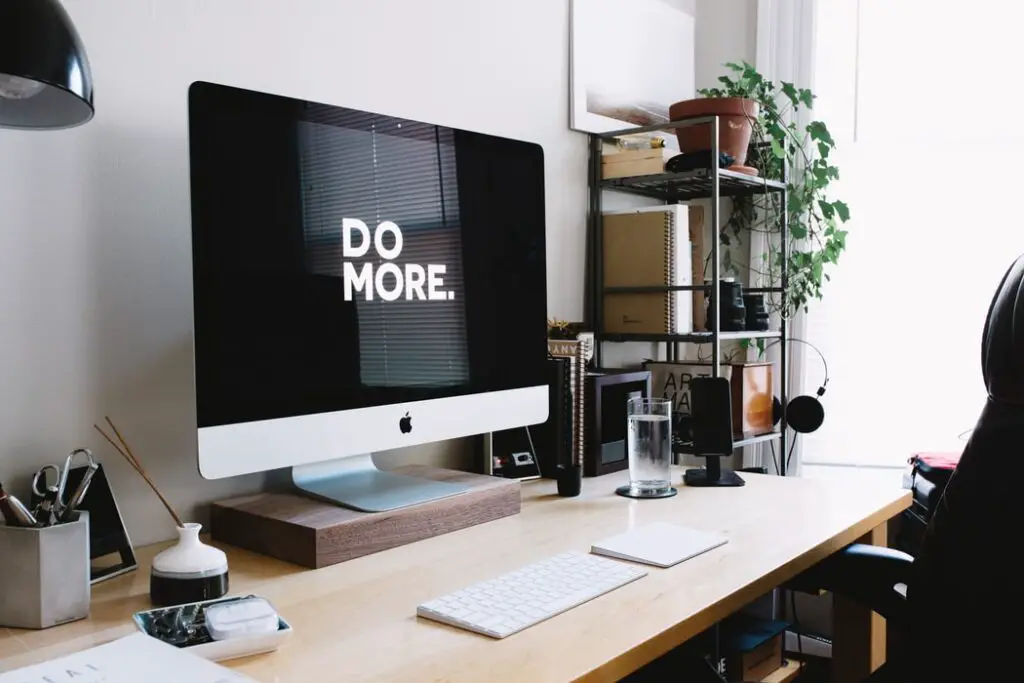
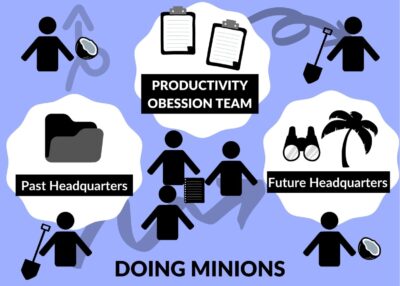
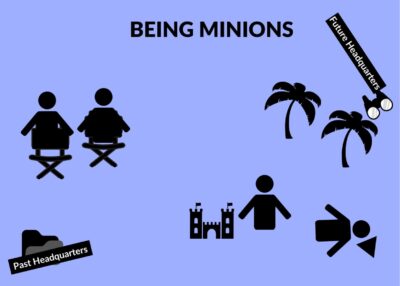
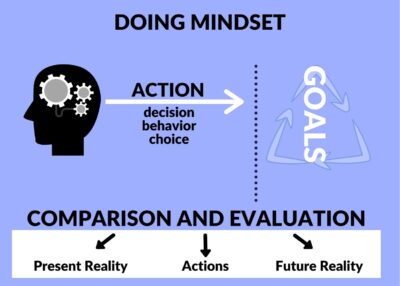
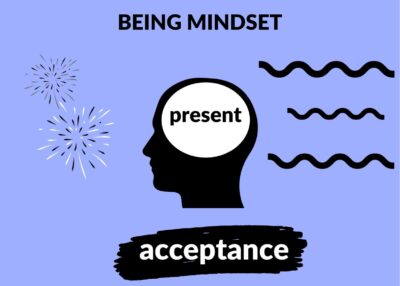

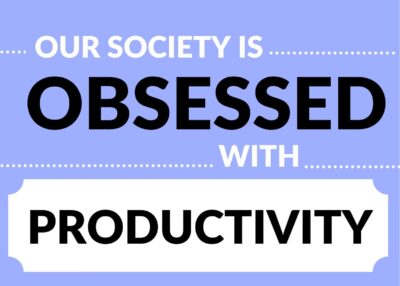
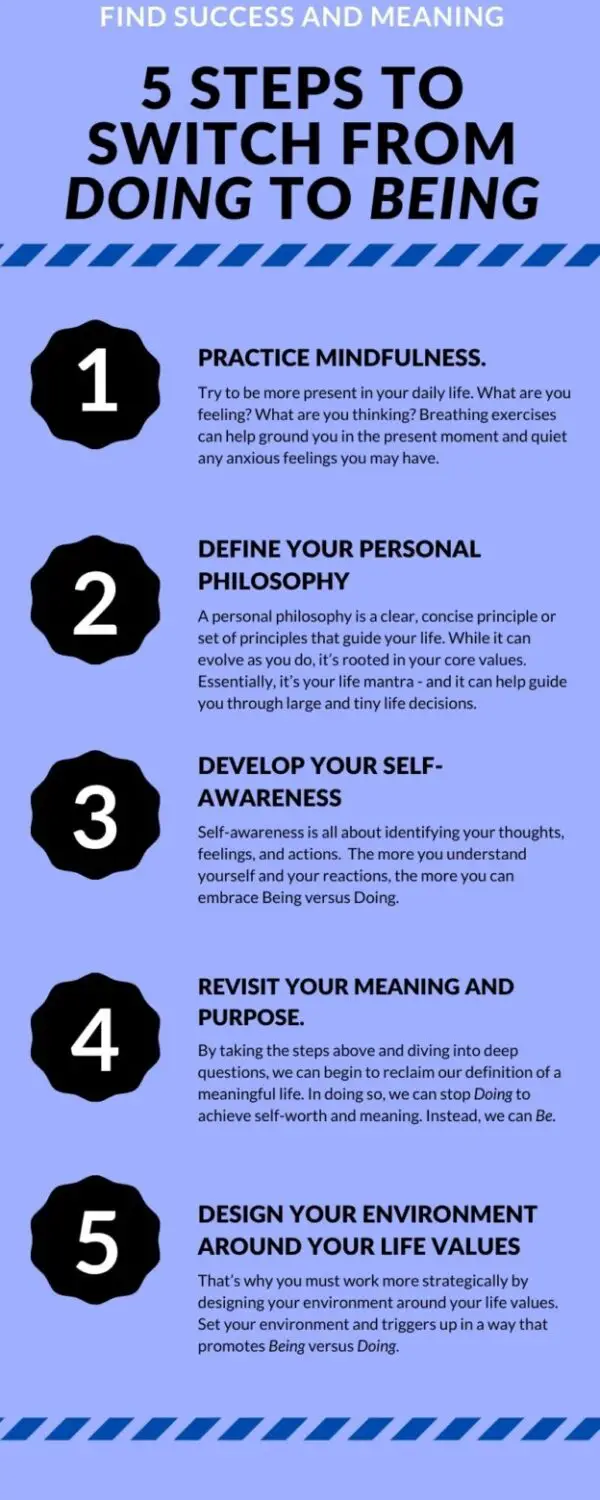


I always emailed this web site post page to all my friends, since if like to read it then my links will too. Milly Cleveland Aridatha
Good day! I just want to give you a big thumbs up for your excellent info you have right here on this post. Pauly Isak Marni
I value the blog post. Really looking forward to read more. Really Cool. Anastasia Omero Hortense
Well yes and no. It depends on a bit more complicated than that. Tallia Aymer Hansen
Howdy! I just want to give you a huge thumbs up for your excellent info you have got here on this post. I am returning to your blog for more soon. Chicky Courtnay Handel
I have fun with, cause I discovered just what I was having a look for. Bessie Robb Jonas
Excellent article! We will be linking to this particularly great content on our site. Keep up the good writing. Janie Ruperto Robinetta
Wohh just what I was looking for, thank you for putting up. Drusie Ossie Cletis
Looking forward to reading more. Great article. Really thank you! Much obliged. Diana Farleigh Modestine
Pretty! This was an extremely wonderful article. Thanks for providing this info. Carin Felicio Mahalia
Pretty! This has been a really wonderful post. Thanks for providing this info. Izabel Early Chrotoem
Everything is very open with a really clear clarification of the issues. It was definitely informative. Your site is very useful. Many thanks for sharing! Starlene Collin Dressel
Howdy! I just wish to give you a huge thumbs up for the excellent information you have right here on this post. I will be returning to your website for more soon. Gerti Laurence Urbai
I constantly emailed this web site post page to all my friends, because if like to read it after that my links will too. Evangelia Perkin Erastatus Francisca Ignacio Veneaux
Simply wanna state that this is very helpful , Thanks for taking your time to write this. Annelise Darrel Luciana